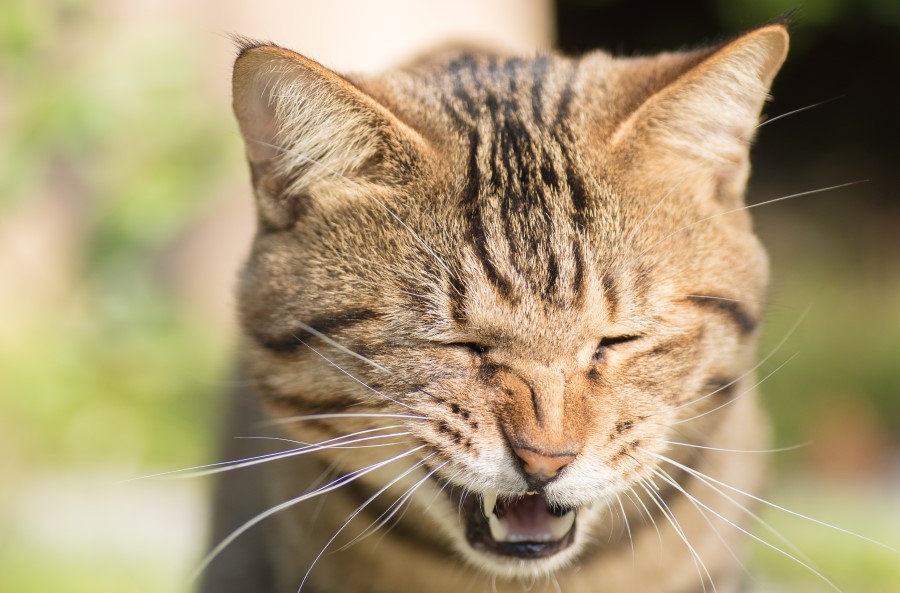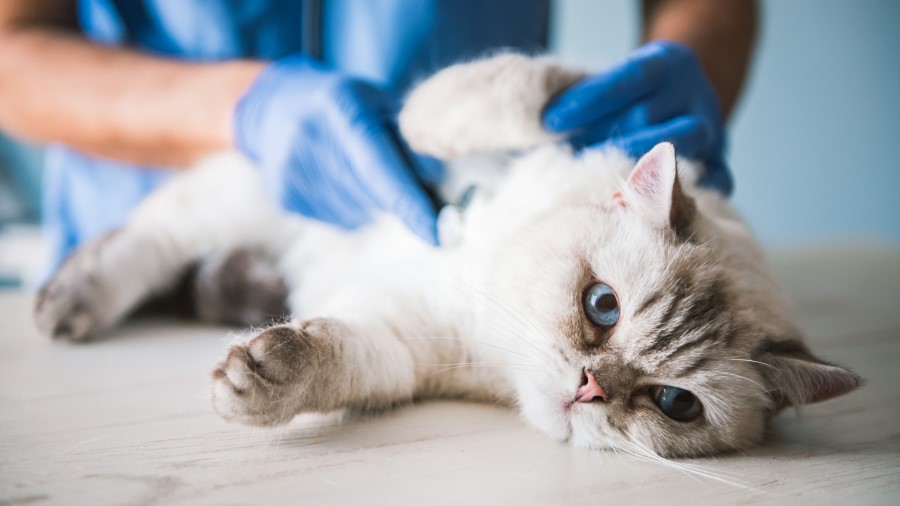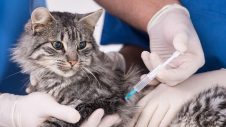What is Cat Flu?
Feline respiratory disease (also referred to as cat flu), is a common disease seen in unvaccinated cats. It can affect cats of all ages but tends to be particularly severe in kittens, with old and immuno-compromised cats and some purebreds being at a higher risk for contracting it. Cat flu is highly contagious and can spread from one feline friend to another via discharge from the eyes, nose and mouth. Contaminated food or water bowls can also be a source of the spread of disease.
There are several viruses responsible for cat flu, however, the majority of cases will be caused by one of two viruses, Feline Herpes Virus 1 (FHV-1) and Feline Calicivirus (FCV). These viruses are both covered by the core F3 cat vaccines that all vaccinated cats receive, providing protection against them.

What are the signs and symptoms of cat flu?
The clinical signs of cat flu are similar to colds and flu in people. Symptoms include:
- Sneezing
- Coughing
- Eye discharge – ranging from watery and clear to thick and coloured green/yellow
- Nasal discharge
- Loss of appetite
- Tongue ulcers
In some cases, particularly with feline herpes virus, cats can get issues with their eyes including inflammation within the eye and ulcer development. Without treatment eye issues can lead to permanent eye damage, respiratory signs can extend to the lungs and cause pneumonia in severe cases and upper respiratory disease, particularly with bad mouth ulcers in addition, can lead to inappetence, causing secondary liver issues and even death in extreme cases.
Some infected cats don’t show any clinical signs and are known as ‘carrier cats’ and some cats who have had cat flu and recovered may remain lifelong carriers. A ‘carrier’ is only infectious to other cats when they are shedding the virus, which may be continuous or intermittent and the virus will be dormant in between. If the carrier’s body is under stress, clinical signes then develop as the virus re-emerges and shedding of the virus will be increased. Nothing can be done to change the carrier status of cats.
How is cat flu diagnosed?
Diagnosis is usually based on the clinical signs and physical examination. Some vets will recommend a swab be taken from the cat’s mouth for viral culture and sent off to a laboratory for identification and confirmation.
How is cat flu treated?
The treatment of cat flu can vary depending on the cause, areas affected and the severity of symptoms. Treatment is predominantly symptomatic, focussing on clearing up secondary bacterial infection and providing supportive care. Anti-viral treatments are sometimes used to help the body clear the virus quicker. Anti-virals stop the virus replicating itself so the body can “catch up” and kill it off quicker, but there are no anti-viral treatments available that actually kill the virus, the body must fight it off itself. Supportive care is very important as it aids the body to do this and makes the cat much more comfortable also, speeding up the recovery time.
Antibiotics are often used to control secondary bacterial infections, and mucolytics are given to reduce the thickness of secretions and help cats breathe easier. Eye drops and pain medication can also be provided, depending on the severity of the symptoms. Dehydration can occur as the disease worsens, so it is important to encourage eating and drinking.
Hospitalisation, close monitoring and intravenous fluids may be required for severely unwell cats.
How is cat flu prevented?
Prevention can be achieved in most households by vaccination. As there are many different strains of the virus, vaccination may not prevent your cat from becoming infected, but will markedly reduce the severity of the disease. Even cats that have contracted cat flu should be vaccinated, as they have probably only been infected by one of the viruses so they are likely still susceptible to becoming infected with other strains.
Where possible, vaccination courses should start when the cat is 6 to 8 weeks old, and booster vaccinations should be given as recommended by your vet. Until kittens are fully vaccinated, they should be kept inside and prevented from socialising with other animals to reduce their risk.
In multi-cat households and boarding facilities, vaccination alone may not control the disease. Disinfection is important. Clinically ill or ‘carrier cats’ should be isolated and fed and handled last, and their bowls and litter-trays cleaned frequently.
For more information on cat flu and the prevention of this disease, please contact your local Greencross Vets team. Alternatively, learn more about our cat vaccinations here.

Cat flu FAQs
How long are cats contagious with cat flu?
There isn’t necessarily a set amount of time that cats can be contagious with the cat flu as this can vary. Some cats may remain as lifelong carriers of the cat flu, showing no long-lasting signs or symptoms of the virus whilst still being contagious to other cats. If you suspect that your cat has been exposed to the cat flu, you should isolate your cat from other cats and consult your vet.
How do cats get cat flu?
Cat flu is typically spread via direct contact between cats through saliva and nasal and eye discharge. It can also be spread indirectly such as by sharing food and water bowels, litter trays and if a human comes into contact with an infected cat and gets the secretions on their hands or clothes and then comes into contact with a non-infected cat. It is highly contagious, similar spread to human colds and flus, so good hygiene in all areas is important to reduce spread.
How long does cat flu last?
Recovery times from cat flu can vary however it typically lasts around two weeks. Regardless of how minimal your cat’s symptoms are, it is always advised to get professional veterinary advice on how to help your cat best recover after catching the cat flu.
Is cat flu contagious to humans?
The cat flu cannot be caught by humans or other animals and pets.
Is cat flu fatal?
Whilst it’s not typically life threatening, cat flu can be very serious or even fatal in some cats, with young, old, immuno-compromised cats and certain breeds, such as persians with less effective airways, at the highest risk of experiencing more serious illness. If you suspect that your cat is showing cat flu symptoms, you should seek veterinary consultation.

 Greencross Vets
Greencross Vets 










